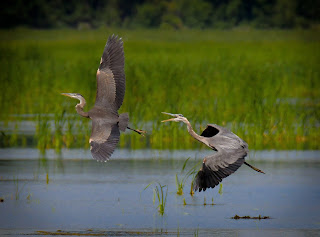As a Sigma sponsored public speaker presenting my sports photography program to photography organizations around the country, I feel honored to be able to share my knowledge with my fellow photographers eager to learn. I am also just as eager to learn and take every opportunity to do so.
This past Tuesday I had the privilege to share my program with the Professional Photographers of Greater New York on Long Island. I had another event to shoot later in the week, so I spent a few days with my Aunt in Lynbrook. One of the PPGNY members, Scott Dere, was showing us some of his spectacular owl photos he has taken in the past and agreed to take me on an owl "hunt" at Jones Beach State Park on the south shore of Long Island the next morning. I had gone on outings before to do bird photography, but it was usually on my own just hoping I'd see something. Going with Scott reminded me more of going to a new river to fly fish with a local guide. Sure, I know how to fish and can even pick the brain of the local fly shop owner on what to use and where, but there is nothing more valuable than to have a local expert share his knowledge.
We headed to Jones Beach early the next morning in hopes of spotting the elusive Snowy Owl that had been spotted in the dunes the week before. It was 32 degrees with a stiff 25 mph wind. I had come to Long Island to speak, so I was not prepared with my usual outdoor gear for the conditions. A Nor'easter had passed over Long Island the day before dumping 3" of rain with 50 mph winds. If I were the owl I would have continued straight to Boca.
With binoculars in hand and an SUV full of camera gear, we scanned the horizon looking for the owl. I asked Scott what I was looking for. "You'll know", he said. The Snowy Owl is two feet tall with a six foot wing span with snow white feathers. It's hard to hide something that big and white on top of a sand dune. We scanned and scanned and found nothing, so we ventured up one of the sandy trails between the dunes toward the ocean directly in to the wind. Other than a Northern Harrier Hawk diving between the dunes in the distance and numb fingers, we found nothing.
We changed areas and made our way toward the beach from a different parking area, only to be met with flooded out trails from the earlier storm. We were about to give up when we found a small patch of footing to get around the flood zone and made it to the beach. Scanning the shoreline, Scott got noticeably excited as he looked toward the west with the binoculars. He asked me what I saw and all I could see was a black blob a quarter mile down the beach with a white spec in front of it. "Bingo!" That was it. The owl had taken up residence down wind of some debris on the beach.
We made our way very slowly toward it, zig zagging our way like feeding deer. Scott warned me not to look directly at the owl so it doesn't think we're stalking it. After a few minutes of "grazing", we were close enough to start shooting. I fired off a few frames just to document that I actually saw one and then began to inch my way closer. Unfortunately, the owl was on to us and decided we were too close for comfort and flew away to the dunes. We kept an eye on it and repeated our grazing pattern, taking the opportunity to photograph some Plovers and Pipers being sand blasted like a flock of penguins in Antarctica. We finally got close enough to get some nice shots of the owl before he made his next jump up the beach. I didn't get the spectacular image of an owl in flight coming toward me, but just seeing one and snapping off a few good shots was enough for me on my first outing. It was a success.






Technical Data: Camera Nikon D7000, Lens Sigma 120-300mm f2.8 Sport with a Sigma 2.0X EX Teleconverter.





















































